02 Aug Office Safety
Just because you work in an office, and not out in the field or on a job site, doesn’t mean you can ignore safety concerns. Fortunately, you can improve safety in and around your office, and most of the dangers are hiding in plain sight.
Clear the Clutter
Keep walkways free of boxes, files, and electrical cords. Clutter is a tripping hazard that can lead to injuries. Never run cords under rugs either, as it creates a fire hazard.
Use Ladders
Don’t stand on a box or chair to reach elevated items. Use a step ladder, extend it fully on firm ground, and only climb the steps to the recommended height. Don’t perch on the top to reach an item.
Choose Non-Skid Materials
Entryways and other areas that experience heavy foot traffic often get wet and slippery. Use non-skid rugs or mats to reduce the chance of falls.
Store Items Safely
Piling file boxes too high on shelves or piling office items haphazardly can lead to injuries. Always store heavy items on the bottom of shelving units and ensure items aren’t jutting out from the shelf.
Improperly stored items can injure a passerby, fall off the shelf, or cause the shelf to tip over. Never overfill storage units and always shut cabinet doors and filing cabinet drawers.
Consider Ergonomics
Offices are prime locations for strains and other injuries caused by poor posture or repetitive movements. Office workstations should be adjustable to accommodate various employees. This equipment might be more costly, but it reduces the likelihood of expensive claims, lost productivity, and absenteeism.
Workers need to adjust their equipment to suit their needs and for optimum efficiency. For instance, a workers meet should touch the floor and hands should be able the access a keyboard without straining the shoulders and neck. If an employee does plenty of keyboarding, provide a document holder too so they’re not constantly straining their eyes and neck.
Use Task Lamps
Most offices rely on fluorescent lighting, which can strain the eyes as it is too bright. Remove a few bulbs from the overhead fixtures and provide individual task lamps with recessed bulbs at work stations instead.
Position Monitors Correctly
Experts recommend monitors sit just below eye level about 20 to 26 inches from the eyes. This reduces eye strain as the eyes rest when they’re slightly below the horizon.
Avoid Screen Glare
Screen glare is a major cause of eye strain and easily avoided. Do not place monitors opposite windows and close curtains or blinds. Glare reduction filters can also reduce light and the risk of eye damage.
Take Frequent Breaks
OSHA recommends at least a 10 minute break for every hour working on a computer. This allows the eyes to readjust and focus on objects at varying distances, instead of just a computer screen.
Isolate Equipment
Office printers, keyboards, binders, laminators, and other devices can create heat and noise that can affect workers. When possible, separate employers from equipment or dampen sounds by utilizing carpeting, acoustic tiles, or cubicles.
Perform Regular Inspections
Regular office inspections reduce risk. Use this Pennsylvania Department of Labor & Industry checklist to spot potential issues and improve workplace safety.
Provide Safety Training
Companies should provide ongoing safety training to employees including job specific risks and equipment operation.
Update your company’s policies and review your emergency evacuation plan with workers. Teach workers how to lift properly, too. The most common workers’ compensation injuries in Pennsylvania are from overexertion of the back.
Poll Employees
The people that work for you can provide you with useful information on potential risks. Often times, simple measures applied quickly can prevent employee suffering and expensive medical claims. Provide an easy way for employees to report their concerns and review them regularly.
Let Gilberts’ Risk Solutions help you assess and control your risks. We’re your Pennsylvania insurance experts and we’ve helped companies for over 150 years. Let us help you create a safer workplace, reduce your insurance costs, and protect your business.


No Comments